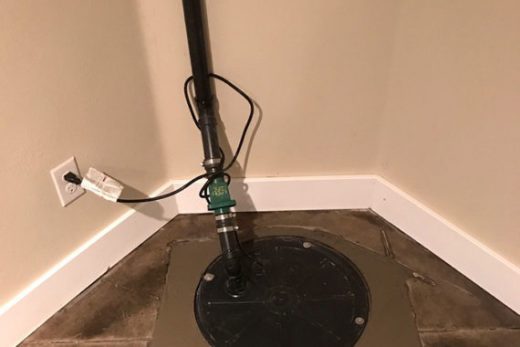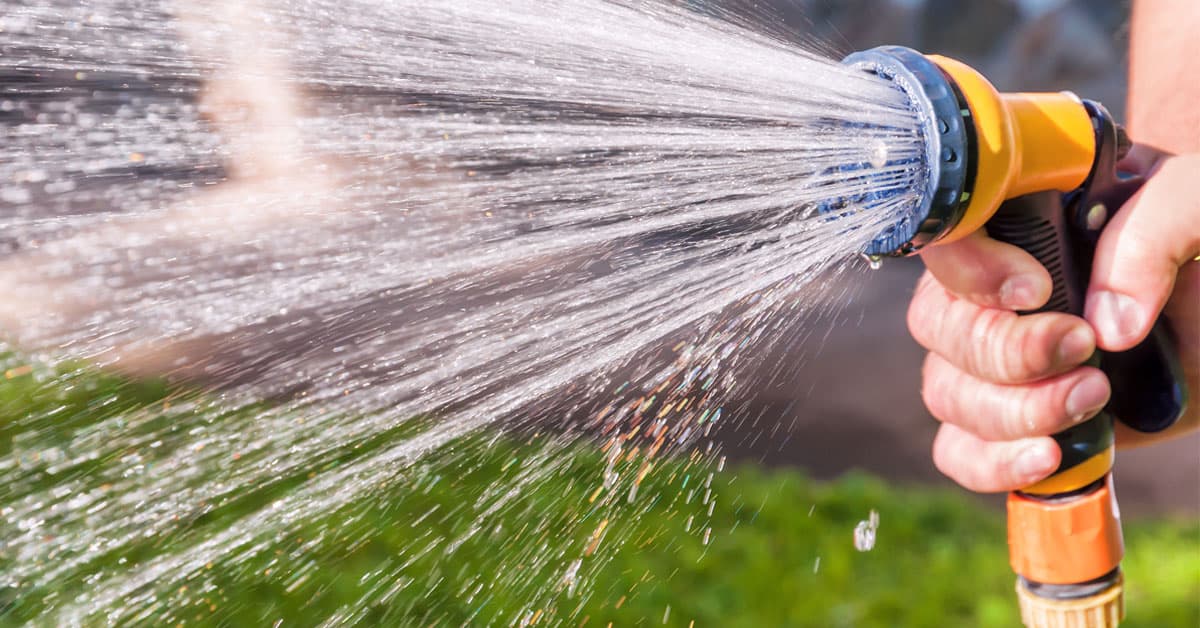We've uncovered this great article on Keep Your Sump Pump Clean, It'll Keep You Dry below on the web and accepted it made perfect sense to write about it with you over here.

Sump pumps are crucial parts in lots of homes, especially in locations susceptible to flooding or extreme dampness. They help prevent water damages by successfully getting rid of excess water from basements or crawl spaces. Nonetheless, like any other home appliance, sump pumps call for routine maintenance to ensure they operate effectively when required one of the most. Cleansing your sump pump is a crucial part of its upkeep, and recognizing how to do it properly can save you from costly repairs and prospective disasters.
Introduction
Preserving a tidy sump pump is important for its appropriate functioning and longevity. Ignoring this vital task can cause blockages, malfunctions, and ultimately, water damages to your residential or commercial property. Therefore, learning just how to cleanse a sump pump is vital for property owners that rely on these devices to maintain their cellars dry and protected.
Indicators of a Dirty Sump Pump
Recognizing when your sump pump requires cleaning is essential for avoiding prospective malfunctions. Some usual indications that indicate an unclean sump pump include strange sounds throughout procedure, lowered water flow, and visible particles in the pit. If you discover any of these symptoms, it's vital to cleanse your sump pump promptly to stay clear of any kind of more problems.
Getting ready for Cleaning
Before you start cleaning your sump pump, it's important to take some security preventative measures. Beginning by shutting off the power to the pump to stay clear of any electrical accidents. Furthermore, wear proper safety equipment, such as handwear covers and goggles, to safeguard on your own from dirt, debris, and potential pathogens.
Understanding the Sump Pump
Before diving into the cleansing process, it's important to have a basic understanding of exactly how a sump pump functions. Commonly mounted in a pit or basin listed below the cellar floor, a sump pump consists of a number of key parts, consisting of a pump, a float button, and a discharge pipeline. When water collects in the pit, the float switch turns on the pump, which then pumps the water out through the discharge pipeline, away from the structure's foundation.
Step-by-step Overview to Cleansing a Sump Pump
Shutting Off the Power
Begin by separating the power supply to the sump pump to stop any crashes while cleaning.
Looking For Appropriate Functioning
Prior to re-installing the pump, perform a quick test to make sure that the float button triggers the pump correctly. Put some water right into the sump pit and observe the pump's operation. If whatever is operating appropriately, you can reconstruct the pump and reconnect the power supply.
Removing Particles and Dirt
Utilize a container or a scoop to eliminate any kind of noticeable debris, dust, or debris from the sump pit. Dispose of the particles effectively to avoid it from clogging the pump or the discharge pipe.
Cleaning the Pump and Float Change
As soon as the pit is free from debris, carefully remove the pump from the pit. Inspect the pump and the float button for any indicators of damages or wear. Make use of a soft brush or towel to clean up the surface areas and get rid of any type of gathered grime.
Purging the System
After cleaning the pump and float switch, purge the sump pit with clean water to eliminate any kind of remaining dirt or sediment. This will certainly assist ensure that the pump runs smoothly and effectively.
Maintenance Tips to Keep Your Sump Pump Clean
In addition to periodic cleaning, there are several upkeep pointers you can comply with to maintain your sump pump in ideal problem:
- Routine Assessment: Check your sump pump consistently for any type of indicators of wear, damage, or obstructions.
- Keeping the Surrounding Area Clean: Ensure that the location around the sump pit is free of debris, dust, and blockages.
- Checking the Pump Occasionally: Examine your sump pump occasionally by putting water into the pit and observing its operation. This will certainly aid you identify any kind of possible concerns before they rise.
Verdict
Cleaning your sump pump is an essential aspect of its maintenance and makes sure that it operates effectively when you need it one of the most. By adhering to the actions laid out in this overview and incorporating normal upkeep into your routine, you can prolong the life expectancy of your sump pump and protect your home from water damages.
6 STEPS ON HOW TO CLEAN A SUMP PUMP PROPERLY
UNDERSTANDING SUMP PUMPS
Your sump pump plays a crucial role in protecting your home by managing and removing excess water. It primarily functions as a “shield”, guarding your basement against the damaging effects of water accumulation. The pump is housed in a sump pit in the lowest part of your basement, and its job is to pump out any water that collects there.
During heavy rainfalls or when snow melts rapidly, water can infiltrate your basement, posing potential risks like flooding, structural damage, and harmful mold growth. Here, the sump pump springs into action, pumping out the intruding water and directing it away from your home.
SAFETY FIRST
Before cleaning, remember to prioritize safety. Disconnect the sump pump from the power source to prevent any accidental electric shocks. Also, wear sturdy gloves to protect your hands from any sharp or dirty components within the pump.
REMOVE THE SUMP PUMP
After ensuring your safety, the next step is to remove the sump pump from its pit. Doing this might require careful maneuvering as you don’t want to damage any pump components. Once removed, clean the sump pit to remove any accumulated debris or sludge.
INSPECT THE PUMP
Inspect the pump for any visible signs of wear or damage. Check the power cord, float switch, and impeller housing. If any components look worn out or damaged, consider replacing them to ensure optimal performance.
CLEAN THE PUMP
Thoroughly clean the pump with warm, soapy water. Make sure to rid it of any dirt, gravel, or other debris that might impede its performance. You can use a toothbrush to clean the small, hard-to-reach parts of the pump.
REINSTALL THE SUMP PUMP
- Reinstall the pump into the sump pit
- Make sure it’s positioned correctly to remove the water effectively
- Once it’s back in place, reconnect it to the power source
TEST THE PUMP
Finally, pour some water into the pit to ensure the pump works correctly. It should start automatically and begin pumping out the water; if it doesn’t, check the power source and the positioning of the pump.
Remember, while cleaning your sump pump is an essential part of home maintenance, hiring a professional plumber for a thorough inspection and cleaning at least once a year is also important. This will ensure that your pump is in optimal condition, ready to protect your home from potential water damage.
BEST PRACTICES FOR CLEANING SUMP PUMP DISCHARGE PIPES
- Regular Inspection: Regularly inspect your discharge pipes, especially during heavy rainfall or snowmelt periods. Look for any signs of blockage or damage. Early detection of problems can prevent serious issues down the line.
- Periodic Cleaning: Over time, sediment and debris can accumulate in the discharge pipes, impeding the flow of water. Regular cleaning helps keep the pipes clear and functioning efficiently. You can use a high-pressure water jet to effectively clean the pipes.
- Insulation During Winter: In colder climates, discharge pipes can freeze, blocking the outflow of water. Protect your discharge pipes from freezing temperatures by insulating them with foam pipe insulation. This will ensure the sump pump can continue to discharge water even in freezing conditions.
- Proper Positioning: The discharge pipe should be positioned to direct water away from your home’s foundation. Improper positioning can lead to water seeping back into the basement. Ensure the pipe is long enough and angled correctly.
- Installation of a Check Valve: A check valve prevents water from flowing back into your sump pit after the pump has pushed it out. Installing a check valve helps maintain the efficiency of your sump pump and reduces the risk of flooding.
- Minimize Pipe Turns: Every curve or turn in the discharge pipe can decrease the efficiency of water flow. By minimizing turns and bends in your discharge pipe, you can increase the efficiency of your sump pump.
https://www.fullspeedplumbing.com/how-to-clean-a-sump-pump-properly9999/

We hope you enjoyed our section about How to Care for Your Sump Pump. Thanks so much for finding the time to read through our article. Sharing is nice. Helping others is fun. Thanks a lot for your time. Return soon.
Appointment
Comments on “Clear Tips for Taking Care of Your Sump Pump”